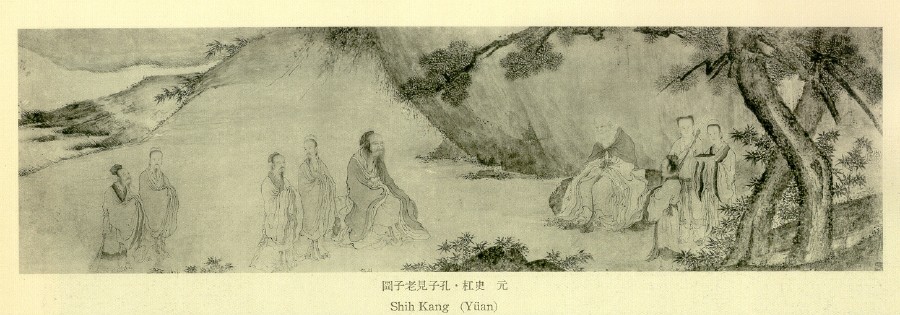In our daily hustle and bustle of striving to get things done, our neurons seem to be firing non-stop. With thousands of thoughts being processed each day, it seems nearly impossible to quiet the mind, especially when our body is at rest.
To counteract the stress of a hectic day, many people have turned to meditation and mindfulness with the idea that by becoming aware of and managing our thoughts, emotions and physical sensations we can achieve tranquility.
Yet becoming tranquil and quieting the mind is easier said than done. Sometimes it seems that the more we try to silence our inner voice, the louder it becomes. Why is this mental chatter so persistent?
Where do our thoughts come from?
Our mind and senses are highly active throughout the day, perceiving and collecting information even when we are not aware of it.
Background noises, visual surroundings, and all manner of media competing for our attention are continuously taken in as messages that are unconsciously stored in our brains. These messages reappear when our conscious self is not dictating our thoughts, such as when we are about to fall asleep or trying to meditate.

Success
You are now signed up for our newsletter
Success
Check your email to complete sign up
Other thoughts come from conscious memories. Many things can trigger memories, which then lead us to recall related events and impressions, and even to consider alternative outcomes, taking us down another path of incessant thoughts.
Still other thoughts come from our strong emotions and desires. Maybe your mind is spinning over who was right in a recent argument; maybe you’re attached to something you haven’t been able to obtain; or perhaps you are stressed by a deadline that you don’t know how to meet.
This constant chatter can become a major obstacle when we try to focus — especially in meditation. Let’s explore how people, both in ancient times and today, have tried to cope with this situation.
The Buddhist approach
For thousands of years, it has been known that a cluttered mind can be a source of suffering. After attaining enlightenment, Buddha Shakyamuni taught that the key to transcending the cycle of death and rebirth was to train the mind. Thus, becoming aware of one’s thoughts and practicing meditation in trance have been essential components to Buddhist practices.

Each Buddhist school may employ different methods to still the mind. Some require keen awareness of both body and mind. Zen Buddhism, for instance, teaches following the breath by noticing how it enters and leaves the belly, while allowing the mind to “just be.”
Similarly, Vipassana meditation requires continuous, careful attention to develop mental concentration. Consciously directing one’s attention to the experiences at hand and labeling them as external phenomena helps train the mind. Using the breath as an anchor, it focuses on seeing things as they really are in order to understand the true nature of existence.
Other meditation techniques rely on external tools to quiet the mind. Mantra meditation, for example, employs a repeated word or phrase, called a mantra, to quiet the racing thoughts of the mind. When the word or phrase is chanted or repeated silently, it promotes concentration, and when the mantra is purposefully chosen, it promotes intention.
Sound bath meditation works in a similar manner. Using instruments such as singing bowls, gongs and chimes, this meditation technique creates immersive sounds with vibrations that help focus the mind and bring it to a state of relaxation.
Body movements can also be used to quiet the mind. Yoga, for example, teaches focusing the attention on precise movements that are synchronized with one’s breathing. By aligning the mind and body, it aims to replace wandering thoughts with full awareness of the present, inducing a sense of calm and clear-headedness.
Qigong (qìgōng 氣功) — an ancient Chinese practice with roots in traditional Chinese medicine — employs body-postures and movements as complementary means to cultivate a serene mind.

Modern Techniques
Based on the Buddhist tradition of maintaining lucid awareness of bodily and mental experiences — itself one of the Seven Factors of Enlightenment — the practice of mindfulness has gained popularity in recent years, especially among those immersed in the busyness of urban life.
Employed for therapeutic purposes since the 1970s, mindfulness practice has been used to reduce depression, stress and anxiety, as well as to treat conditions such as drug addiction and eating disorders. At its core is the idea that, by paying attention to the present moment without judgment, we can detach from our thoughts, change the way we relate to experiences and consciously choose how we react.
Mindfulness practice is done through simple activities such as scanning our body for any pain or tension we may not be aware of, taking note of the information perceived by our five senses, noticing our breathing rate or observing our thoughts.
Popular applications of this method include practices such as mindful eating, which focuses on bodily sensations and food-related thoughts and feelings to improve eating habits; and mindful conversation which aims to improve interpersonal communication and foster empathy.
Mindfulness relies on practice and repetition to train the mind. It teaches one to identify the moments when the mind wanders, and to bring it back to the present moment as many times as necessary, while remaining compassionate and non-judgmental. But could this technique, when included in our daily routine, truly help us to achieve a calm mind?

Although mindfulness has been shown to bring physical and mental health benefits, it is worth pausing to consider the fact that it may take a Buddhist monk several years of diligent practice to train the mind to become still. Then, how long will it take us — who live in the secular world and practice in our spare time — to learn to quiet the mind?
Ancient wisdom
The land of China was the stage for the development of one of the greatest human civilizations. For over five thousand millenia, the ancient Chinese attached considerable importance to the cultivation of the mind and the heart. They believed that only through self-cultivation could one attain and become one with the Tao, or Great Law of the universe.
The great sages imparted their teachings to humanity to guide them on the meaning of life, the proper way to live as human beings and the path to transcend the suffering inherent to the human condition. Ancient wisdom may actually be the key component of our quest for a tranquil heart and mind.
Lao Zi, the founder of Daoism, emphasized following the course of nature as the path to attaining peace of mind: “Be content with what you have; rejoice in the way things are. When you realize there is nothing lacking, the whole world belongs to you.”
According to Lao Zi, life is a series of natural changes, and resisting them or wishing reality to be different only brings chaos to the mind. Thus, the mind will be at peace when one is content with the present as it is: “If you realize that all things change, there is nothing you will try to hold on to.”
Mencius, a Confucian scholar and philosopher, advised: “To nourish one’s mind, there is nothing better than to reduce one’s desires. A man with few desires will be able to keep his heart clear and steadfast most of the time.” Letting go of attachments and addictions is essential for clarity of mind.

Buddhism also stresses the importance of abandoning desires in order to attain a serene mind. Shakyamuni taught his disciples to follow precepts to attain samadhi — a calm, undistracted and unified state of awareness. Following the precepts involved abstaining from evil thoughts and actions. Abiding by these moral codes could improve the nature of the mind and increase one’s ability to enter tranquility.
Traditional wisdom offers a higher truth that our modern society has yet to grasp. Perhaps the key to achieving inner peace lies not in the technique we use, but in the ability to consciously do away with the stubborn thoughts that prevent us from achieving it. To do this, it is necessary to reflect on the ideas or notions in which they are rooted.
Our numerous ongoing pursuits may be precisely what prevent tranquility; they are like friction against the smooth flow of the universe. When we set out to truly improve ourselves by consciously letting go of various desires and attachments, we will align with the natural order of the universe and the clutter will gradually clear itself from our minds, enabling us to return to our innate purity of mind.













